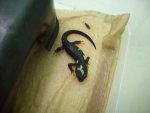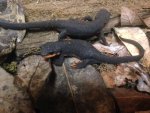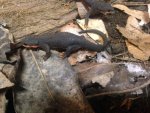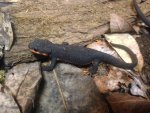otolith
Member
- Joined
- Dec 16, 2009
- Messages
- 484
- Reaction score
- 24
- Points
- 18
- Country
- United States
Back in April of this year I collected a handful of T. rivularis egg masses from one mile stretch of a Northern California creek. Half of the eggs were sent to another member (who has had better success than I) and the 4 clusters I kept ended up moving across the country with me to Baltimore.

Unfortunately the majority of these eggs ended up either fuzzing over or slipping prematurely.

Here are the four that made it about 2 months after hatching.
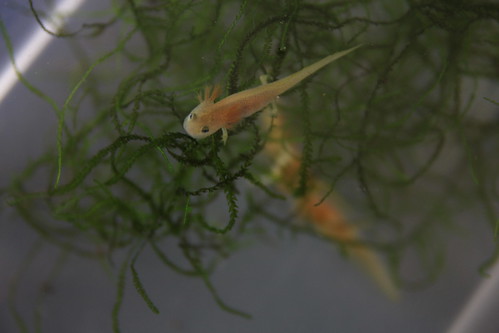
They were fed primarily blackworms and daphnia, with chopped earthworms and frozen bloodworms making up the bulk of the diet as they got larger.
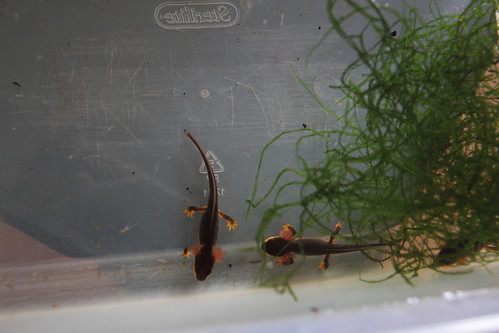
They are now about 3" long and all have huge gills despite appearing to have completed morphing. Their skin is quite rough but they don't seem to show any signs of wanting to leave the water. As you can see they have darkened and reddened significantly as they've grown, I suspect that their belly color will intensify after they have transitioned to terrestrial life.


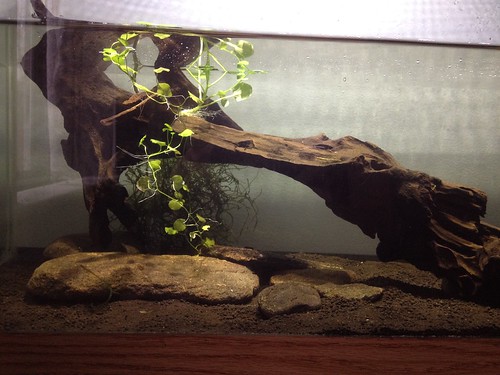
This is their new home, a 20 gallon tall filled about halfway. There is some watercress anchored to the driftwood and room for them to haul out when they feel like practicing leaving the water. Hoping to have babies available to other members in a few years

Unfortunately the majority of these eggs ended up either fuzzing over or slipping prematurely.

Here are the four that made it about 2 months after hatching.

They were fed primarily blackworms and daphnia, with chopped earthworms and frozen bloodworms making up the bulk of the diet as they got larger.

They are now about 3" long and all have huge gills despite appearing to have completed morphing. Their skin is quite rough but they don't seem to show any signs of wanting to leave the water. As you can see they have darkened and reddened significantly as they've grown, I suspect that their belly color will intensify after they have transitioned to terrestrial life.



This is their new home, a 20 gallon tall filled about halfway. There is some watercress anchored to the driftwood and room for them to haul out when they feel like practicing leaving the water. Hoping to have babies available to other members in a few years

 Asian Newt Group
Asian Newt Group